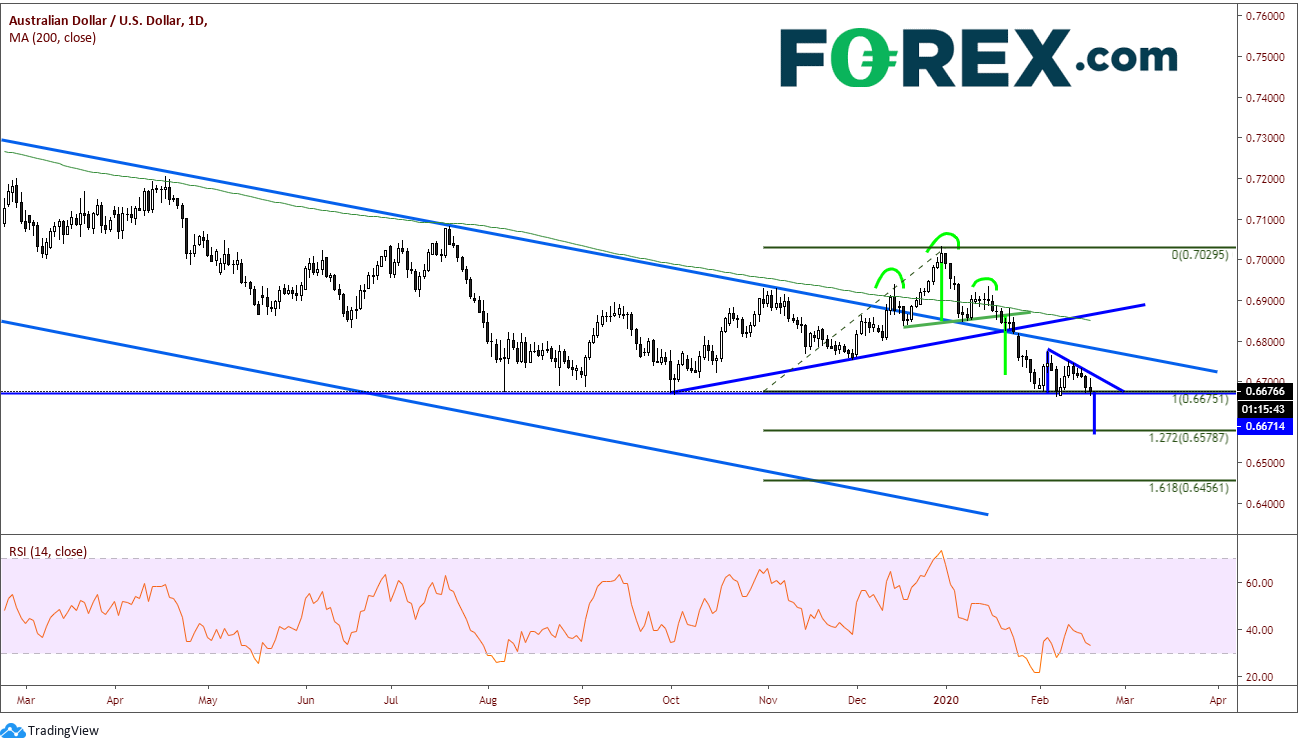Home / Forex news / Can Employment Data Save the Aussie?

In a few hours, Australia will release the Employment Change for the month of January. The estimate is +10,000 vs +28,900 in December. Last month, AUD/USD was at an important inflection point in the market when the employment change was released for December. You may recall that we discussed how it is important to look at the makeup of the headline number to get a better gauge of the data. Australia releases a headline number, then breaks it up between full-time employment change and part-time employment change. Last month the headline number was +28,900, however the full-time component was -300 jobs, while part-time employment was +29,200! AUD/USD initially went bid on the headline number, only to roll over a few days later and break the neckline of the Head and Shoulders formation (and eventually reach the target).

Source: Tradingview, FOREX.com
Today, AUD/USD sits at the bottom on a triangle. Just a simple measurement of the triangle puts the target near .6580, which is also the 127.2 Fibonacci extension from the October 1st lows to the December 31st highs. Price is currently trading near .6675. A move below .6662 would be the lowest level AUD/USD has traded since January 2009! If the employment change is worse than expected later, price would be at .6580 in a hurry!

Source: Tradingview, FOREX.com
On the other hand, AUD/JPY has been holding up well, despite the China slowdown amid the Coronavirus outbreak. The reason is because USD/JPY has been held up by the strength of the equity markets. USD/JPY is currently up 1.50%, or 165 pips. This has pulled AUD/JPY higher with it, currently up 1.32%, or 97 pips! It has closed above the 200 Day Moving Average and even filled the late January gap by 4 pips. A stronger employment change number can have this pair moving toward horizontal resistance at .7550 and a confluence of resistance near .7600.

Source: Tradingview, FOREX.com
The one thing to remember regarding the Australian Employment Change is that the headline number is made up of full-time employment change and part-time employment change. Although the headline number may “beat” estimates, the breakdown may be worse. As we saw last month, the “strong beat” only lasted a few days, as the breakdown between full time and part time was bad and price eventually rolled over!
Original from: www.forex.com
No Comments on “Can Employment Data Save the Aussie?”